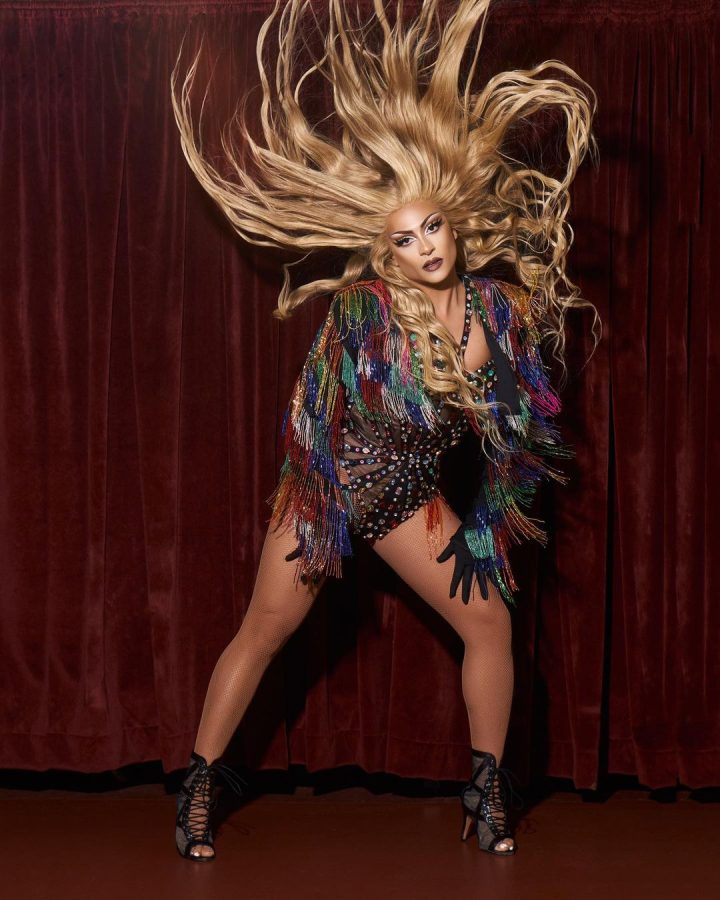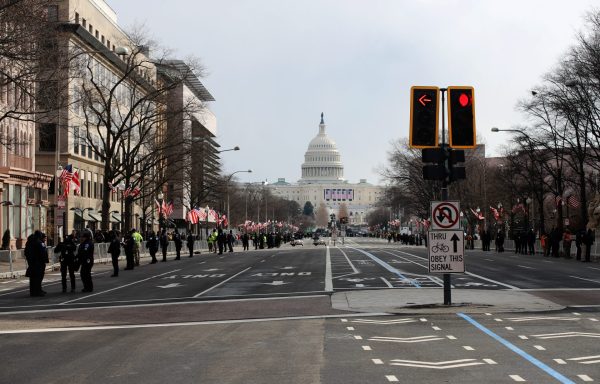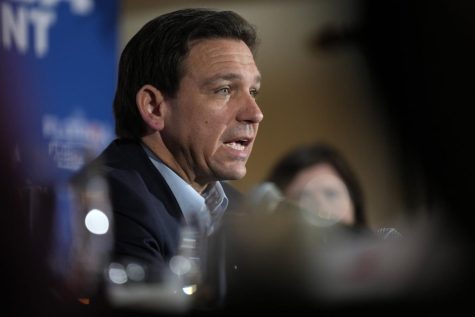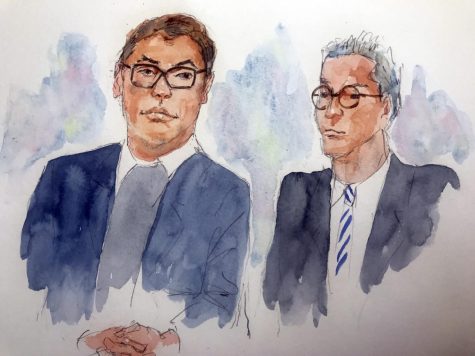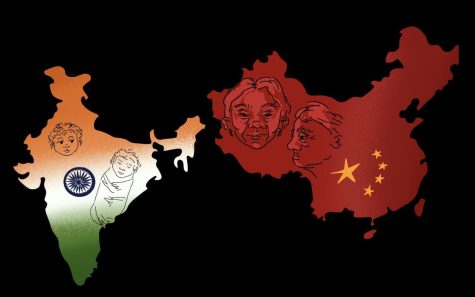Anti-drag legislation targets LGBTQ+ community
@denalifoxx | Instagram for The DePaulia
Professional figure skater and figure skating choreographer Denali Foxx has competed on season 13 of “RuPaul’s Drag Race.”
Over the past six months, more than a dozen states across the country have introduced anti-drag legislation. Whether it is referred to as “adult entertainment” or “cabaret,” the art form of drag is under attack from some of the most powerful local legislators in the nation.
Though many of the anti-drag bills making their way through state congresses are framed as measures taken to protect children from seeing explicit content, drag artists have raised concerns that the bill is an attack on queer identity and expression.
Ali-Reza Mirsajadi, an assistant professor of theater studies at DePaul’s Theatre School, teaches numerous courses on gender and trans-expansive theater performance. This fall, Mirsajadi will teach a course on drag practice and theory.
“It’s really to let students be able to use heightened gender as a means to explore their personal voice, their artistic voice,” Mirsajadi said. “But also to give a safe space for students to explore what gender performance looks like in their own everyday lives, as an extension of drag.”
For Cordero Zuckerman, a globetrotting drag performer and RuPaul’s Drag Race alumni better known to fans as Denali, his drag career stemmed from his background in figure skating and desire to find a queer community of his own.
“I was really craving a queer community,” Zuckerman said. “I was craving more gay friends. On the cruise ships [where I skated], there’s a lot of LGBTQ+ employees and entertainers on board. We would all gather on Sundays, and we would watch RuPaul’s Drag Race, and I was instantly obsessed.”
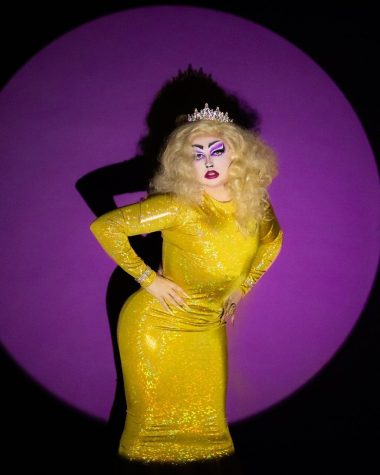
The DePaul community also has a host of drag artists among its student body, including Skater Gaytor, a sophomore who has participated in a number of university-hosted drag nights. To Skater Gaytor, drag is not just an art form but a crucial means of self-expression and a tool for developing identity.
“What I got attracted to in the art form was the sense of self-expression and the sense of fun,” Skater Gaytor said. “What drew me to it was just seeing people post about Drag Race online. When season nine aired, when I was in the eighth grade, I started watching it and I was like, ‘wow, it seems so fun. Everyone just seems so free to be themselves in how they’re acting.’”
However, for as long as drag has been a powerful tool in uniting communities and helping develop identity, its performers have been persecuted and the practice has been shunned.
According to Mirsajadi, the variance in language in bills trying to ban drag — is rooted in the historic inability of power structures to pigeonhole or define drag.
“At the heart of it, drag can’t really be properly defined because at least since the advent of the Christian empire and imperialism and white supremacy, drag was demonized as a kind of ‘other,’ as a style of presentation performance that was offensive and opposite to religious values rooted in heteronormative gender norms,” Mirsajadi said.
Mirsajadi believes that the threat to conventional gender norms and heterosexual nuclear families is at the heart of the consistent attacks on drag from bodies of power. However, while drag has always been an art form under attack, the involvement of children in legislation against drag is a new development.
“Children are among the most vulnerable parts of our society, and there’s a way to reach the heartstrings of parents by talking about the threat to children,” Mirsajadi said. “Politicians know this is a really potent tool for their ideas, trying to get them communicated, and trying to get people behind them. It’s one of the reasons why I’m so confused about everything with gun legislation.”
Both Denali and Skater Gaytor acknowledge that there are drag performances unsuitable for young audiences. Drag, after all, in its modern mainstream form, draws heavily from the underground club scenes of the late ‘70s and ‘80s.
“I don’t think that drag catered to an older, cruder audience is suitable for children,” Denali said. “I agree on that front … because I think that drag should honor its roots, and it should honor where it comes from in that rebellious aspect. So I’m not saying we need to completely change drag so that children can consume it. There’s DragCon, there’s drag queen story hour. There are things like that because drag is a versatile vessel.”
Until American culture can accept and understand the multifaceted, creatively limitless, free-spirited art form that is drag, Skater Gaytor emphasized that the best thing fans of drag can do in the face of this frightening legislature is support their local drag artists.
“Support queer people,” Skater Gaytor said. “Chicago drag artists that you should be following that are trying to make change are Whorechata, Georgia Rising, Testostermoan, Mr. Transformer, Lúc Ami and myself. We’re all trying to create a change with our drag. It’s also really important to support some pillars in our scene like Irregular Girl, Lucy Stoole, Tenderoni — all trans or drag artists are just gender, nonconforming queer people for trying to create a change in our community.”


